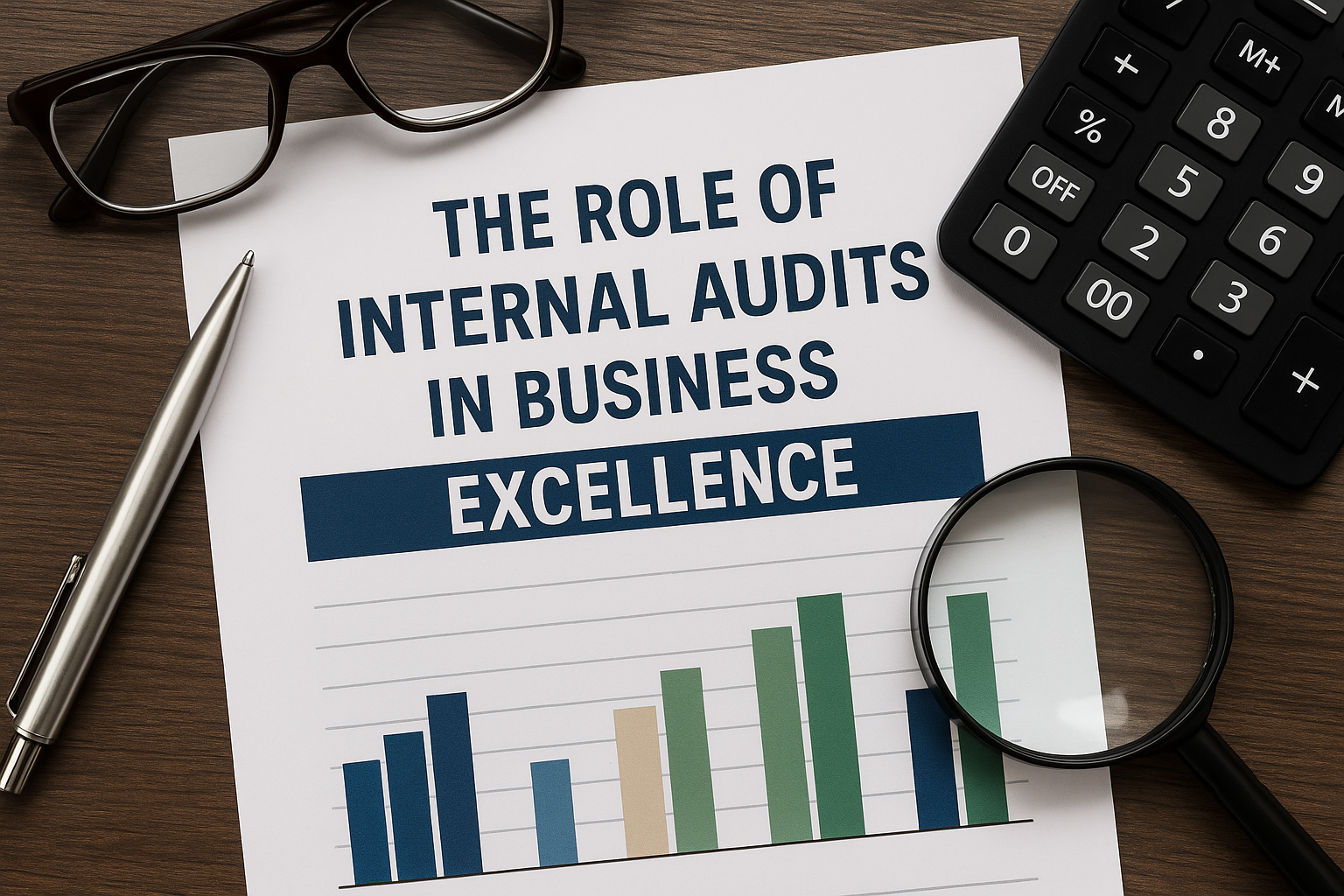
The Role of Internal Audits in Business Excellence
Achieving business excellence requires more than just compliance—it demands continuous improvement, risk management, and operational efficiency. One of the most effective tools for achieving these goals is internal auditing.
An internal audit is not just a regulatory requirement; it is a strategic tool that helps businesses identify weaknesses, optimize processes, and ensure long-term success. But how exactly do internal audits contribute to business excellence?
In this guide, we’ll explore the role of internal audits, their benefits, and how companies can leverage them to achieve higher efficiency, compliance, and growth.
1. What is an Internal Audit?
An internal audit is an independent, systematic review of a company’s operations, processes, and management systems. Unlike external audits conducted by certification bodies, internal audits are performed by in-house teams or third-party consultants to assess:
✅ Regulatory compliance – Ensuring adherence to industry standards and legal requirements.
✅ Operational efficiency – Identifying process inefficiencies and cost-saving opportunities.
✅ Risk management – Detecting financial, security, and operational risks before they become major issues.
✅ Continuous improvement – Enhancing policies, procedures, and business performance.
Internal audits apply to all industries and align with various standards such as:
📌 ISO 9001 (Quality Management)
📌 ISO 14001 (Environmental Management)
📌 ISO 27001 (Information Security)
📌 ISO 45001 (Occupational Health & Safety)
2. Why Internal Audits Are Essential for Business Excellence
a) Enhancing Process Efficiency & Cost Reduction
✔ Internal audits identify waste, inefficiencies, and redundancies in business processes.
✔ Helps streamline operations and improve resource utilization.
✔ Leads to significant cost savings by eliminating unnecessary expenses.
b) Ensuring Regulatory & ISO Compliance
✔ Internal audits help businesses stay ahead of regulatory changes.
✔ Prevents compliance violations and legal penalties.
✔ Makes external audits easier by ensuring readiness for ISO certification.
c) Strengthening Risk Management & Fraud Prevention
✔ Detects financial irregularities, cybersecurity threats, and operational risks.
✔ Prevents fraud, security breaches, and financial losses.
✔ Builds trust with stakeholders by ensuring transparency and accountability.
d) Driving Continuous Improvement & Innovation
✔ Audits provide insights into areas for improvement and innovation.
✔ Encourages a culture of continuous learning and best practices.
✔ Helps businesses stay agile and competitive in dynamic markets.
e) Boosting Employee Performance & Accountability
✔ Internal audits ensure employees follow best practices and company policies.
✔ Encourages responsibility and accountability across departments.
✔ Improves training programs and workforce efficiency.
3. The Internal Audit Process: Step-by-Step Guide
Step 1: Define Audit Objectives & Scope
📌 Identify which business areas need auditing (finance, HR, operations, supply chain, etc.).
📌 Set clear goals (e.g., risk management, process improvement, ISO compliance).
Step 2: Develop an Audit Plan
📌 Schedule audit timelines and assign responsibilities.
📌 Collect relevant documents, policies, and performance data.
Step 3: Conduct the Audit & Gather Evidence
📌 Review company policies, procedures, and records.
📌 Interview employees and department heads.
📌 Identify gaps, inefficiencies, and non-conformities.
Step 4: Analyze Findings & Identify Risks
📊 Categorize issues as:
✔ Major risks (urgent corrective actions required).
✔ Minor inefficiencies (recommendations for improvement).
✔ Best practices (successful processes that should be maintained).
Step 5: Provide Audit Report & Corrective Actions
📌 Share audit findings with management.
📌 Implement corrective and preventive measures.
📌 Assign action plans and deadlines for improvements.
Step 6: Follow-Up & Continuous Monitoring
✅ Track progress of corrective actions.
✅ Conduct periodic internal audits to ensure ongoing improvements.
✅ Keep management informed about compliance and performance trends.
4. Internal Audits vs. External Audits: Key Differences
| Feature | Internal Audit | External Audit |
| Purpose | Improve processes, identify risks, ensure compliance | Validate compliance for certification or regulatory approval |
| Conducted by | In-house audit team or third-party consultant | Independent certification body |
| Frequency | Regularly (monthly, quarterly, or annually) | Once per certification cycle (e.g., every 1-3 years) |
| Focus Area | Operational efficiency, risk management, business improvement | Compliance with ISO, regulatory, and legal standards |
| Outcome | Identifies areas for internal improvement | Determines if a company meets external certification requirements |
5. How Businesses Can Maximize the Value of Internal Audits
✔ Build a Strong Internal Audit Team
📌 Train internal auditors on ISO standards, risk management, and compliance best practices.
📌 Use data-driven audit tools and AI-based analytics to enhance accuracy.
✔ Leverage Technology for Audit Automation
📌 Implement AI-powered auditing software to track risks and compliance in real time.
📌 Use cloud-based documentation systems to simplify audit record-keeping.
✔ Align Audits with Business Strategy
📌 Ensure internal audits support business growth, sustainability, and digital transformation.
📌 Use audit findings to drive strategic decision-making and innovation.
✔ Foster a Culture of Continuous Improvement
📌 Encourage employees to participate in the audit process and provide feedback.
📌 Promote learning, transparency, and accountability at all levels.
6. The Future of Internal Auditing: AI & Digital Transformation
As businesses embrace technology, internal auditing is evolving with:
🚀 AI & Machine Learning – Predicting risks and anomalies before they occur.
🚀 Blockchain-Based Auditing – Enhancing transparency and security in financial audits.
🚀 Real-Time Monitoring – Using IoT and analytics for continuous compliance tracking.
🚀 Integrated Risk Management Systems – Combining internal audits with enterprise-wide risk management frameworks.
By adopting AI-driven internal audits, businesses can increase accuracy, reduce costs, and enhance compliance efforts.
7. Conclusion: Internal Audits as a Business Excellence Tool
Internal audits are no longer just about compliance checks—they are a strategic tool for business success.
✅ Improve operational efficiency & reduce costs
✅ Ensure compliance with ISO and regulatory standards
✅ Strengthen risk management & fraud prevention
✅ Enhance employee accountability & process improvement
✅ Drive continuous business growth & excellence
💡 Want to optimize your internal audit process? Contact us today to develop a customized internal audit strategy for your business! 🚀✅